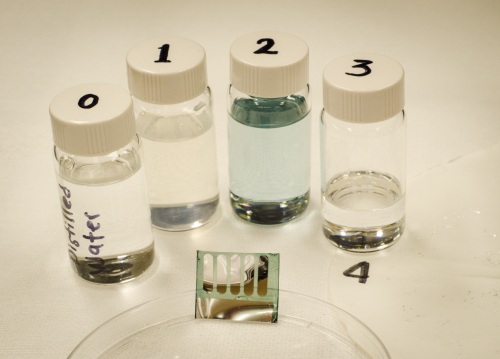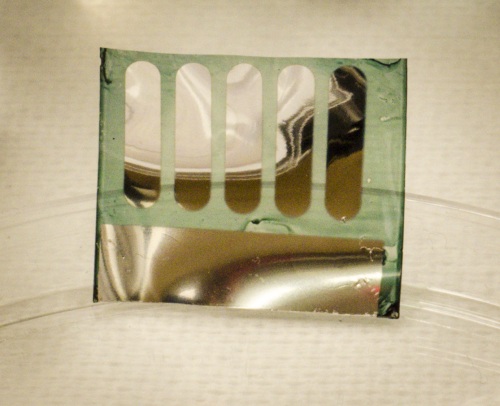Eco-friendly technology proves remarkably efficient
Researchers from the Georgia Institute of Technology and Purdue University have developed a series of remarkably efficient solar cells using the natural substrates found in trees.
Researchers have discovered a way to use a tree’s natural substrates to create recyclable solar cells. (Image via vi.sualize.us)
What’s more, by fabricating the materials on cellulose nanocrystal (CNC) substrates, these solar cells can be recycled in water once they’re unusable — within minutes of being immersed in water, the entire CNC substrate will dissolve, at which point the solar cell can be separated into all of its major components.

A solar cell was created using the natural substrates found in trees.
As far as performance, the researchers report that their organic solar cells achieve a power conversion efficiency of 2.7%, an unprecedented benchmark for cells on substrates derived from renewable raw materials.
The reason why they’re able to achieve such a high conversion rate is due in large part to the fact that the CNC substrates upon which the solar cells are fabricated are optically transparent. This unique feature enables light to pass through them before being absorbed by the thin layer of organic semiconductor.

The CNC substrates of the group’s solar cells allow for greater conversion efficiency.
“The development and performance of organic substrates in solar technology continues to improve, providing engineers with a good indication of future applications,” said Georgia Tech College of Engineering Professor Bernard Kippelen, who led the study and is also the director of Georgia Tech’s Center for Organic Photonics and Electronics (COPE). “But organic solar cells must be recyclable. Otherwise we are simply solving one problem, less dependence on fossil fuels, while creating another, a technology that produces energy from renewable sources but is not disposable at the end of its lifecycle.”
While the idea of organic solar cells has been around for a while now, the technology is generally fabricated on glass or plastic, neither of which are easily recyclable. The alternative to this is the not-very-eco-friendly petroleum-based substrate. To this end, paper substrates are better for the environment. The problem with them in the past has been their high porosity, though, which severely limits the technology’s performance.
This is what makes cellulose nanomaterials an exciting alternative. They come from wood, so they’re green, and they’re also renewable and sustainable. Furthermore, they have low porosity – just two nanometers or so.
Now, while the team’s conversion efficiency is impressive for an organic solar cell, and it’s great that the technology is earth-friendly, today’s market is all about numbers, and 2.7% is still a way’s off from the efficiency of already-in-use glass / petroleum-based substrates.
As a result, there’s still work to be done.
“Our next steps will be to work toward improving the power conversion efficiency over 10 percent, levels similar to solar cells fabricated on glass or petroleum-based substrates,” said Kippelen. The group hopes to achieve this goal by optimizing the optical properties of the solar cell’s electrode. "We will also coat these cells with an eco-friendly, thin environmental barrier coating to protect the cells from water and oxygen when operating in the field."
The group’s paper was published in the journal Scientific Reports under the title “Recyclable organic solar cells on cellulose nanocrystal substrates”. It is available for purchase.
Story via gatech.edu